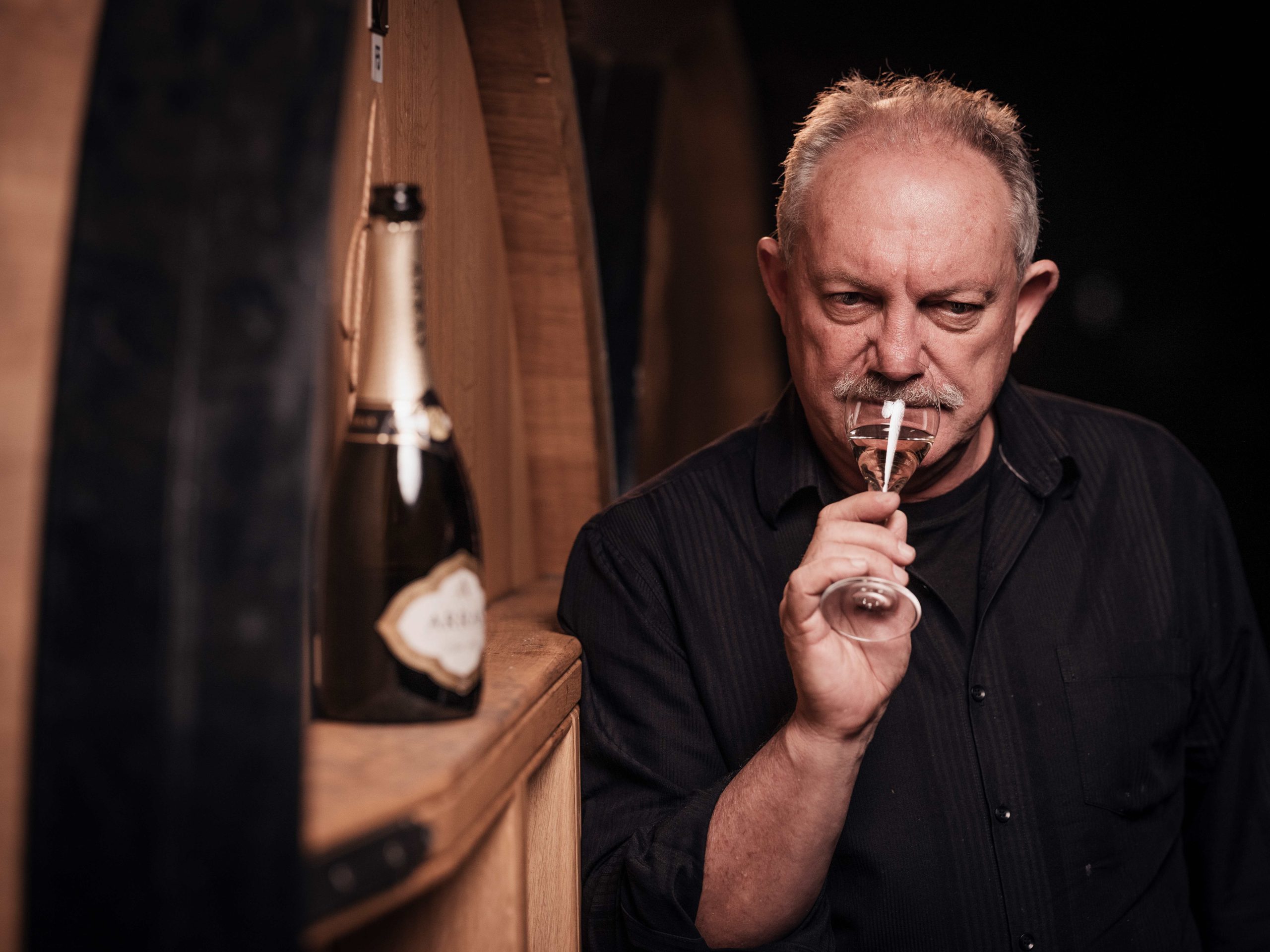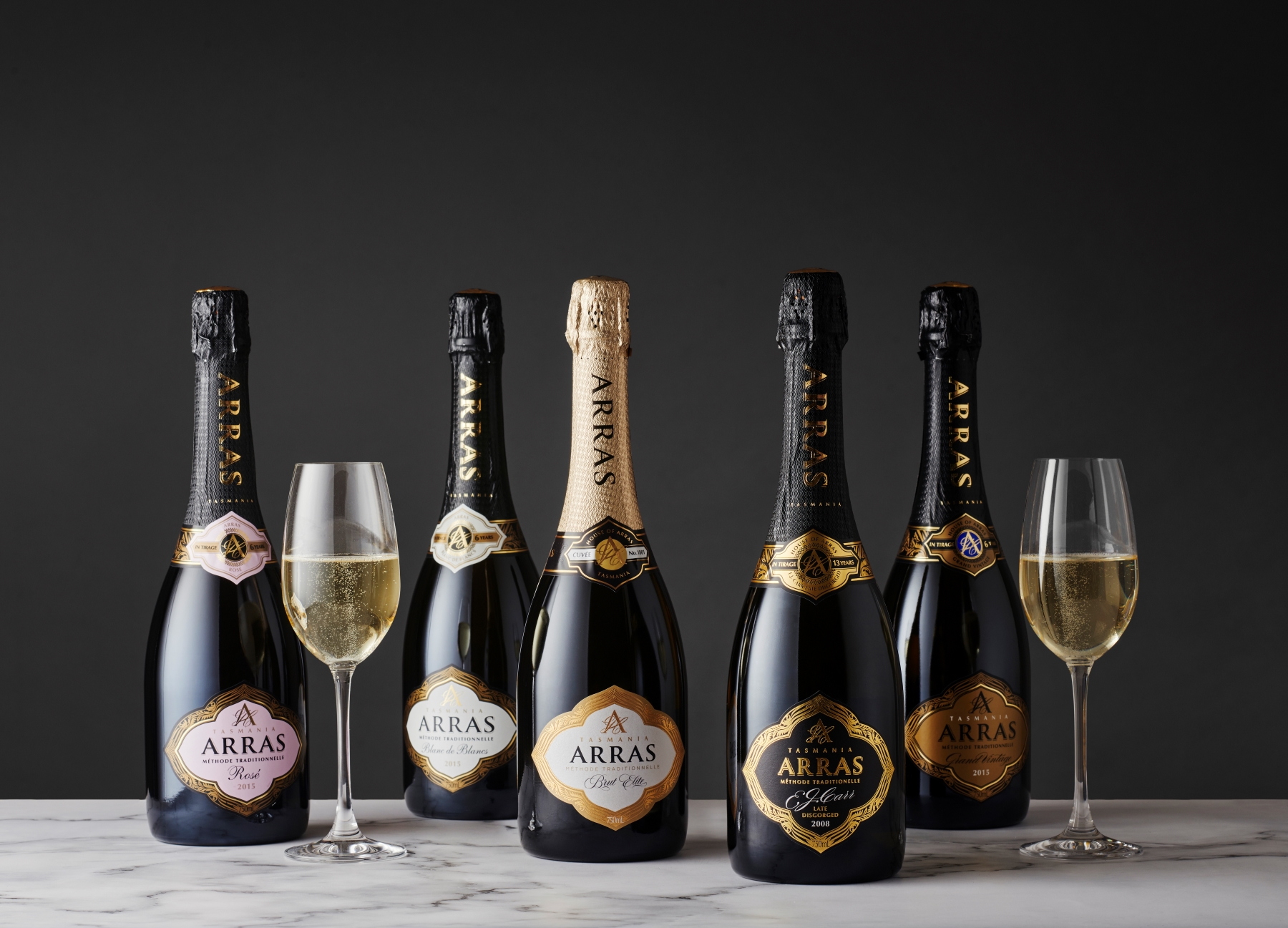This website uses cookies so that we can provide you with the best user experience possible. Cookie information is stored in your browser and performs functions such as recognising you when you return to our website and helping our team to understand which sections of the website you find most interesting and useful.
Future growth is ‘long game’ for House of Arras and its new owner
House of Arras winemaker Ed Carr sat down with db to explore the future of the lauded sparkling wine brand.

When winemaker Ed Carr visited Tasmania in 1988, the island had fewer than 50 hectares of vineyards. Now, vines cover around 2,800ha. Although still one of Australia’s smaller wine regions, the growth is remarkable, with producers capitalising on its potential for cool climate varieties and traditional method sparkling wines. It now has an international reputation, and Carr has been one of its strongest advocates.
The first cuvées of Tasmanian sparkling wines emerged in the 1980s, so Carr had already seen the island’s potential in 1988. The memory returned to him in 1995 when, during his work at BRL Hardy Ltd (later renamed Accolade Wines) he secured some Tasmanian grapes to work with. “We thought, sort of instantly,” he says, “this is where we want to be.”
That same year, House of Arras was founded with Carr as its winemaker. In its almost three decades, it has gained a substantial reputation. In fact, House of Arras has become Australia’s most-awarded sparkling wine producer. This year, for instance, House of Arras achieved a Master medal among its first-ever entries to the Global Sparkling Masters.
In 2023, the brand began a new chapter in its story. House of Arras was acquired by Handpicked Wines, a company focusing on boutique production from Australia’s premier vineyards and regions. Carr spoke with db to explain how the acquisition is developing the business and what the future holds as House of Arras enters more markets.
Aligning their goals
The new path is a significant change, opening up new business opportunities and allowing the company to pivot its strategy. However, it is built on respect for each business and a shared recognition of the House of Arras’ core identity.
“It’s a family-owned company with William Dong as the owner. He is genuinely excited about it, which is really brilliant,” says Carr. The match has been built on an alignment of values between the partners.
Helpfully, the core team has remained in place to navigate any transition. With Carr believing that it takes at least three years to understand the journey from vineyard to glass, human capital is central to House of Arras’ success. As Carr explains: “it is essential that they are fully immersed in the critical steps that ultimately build the wine style we are known and celebrated for.”
Yet the acquisition balances mutual respect with challenge. “It’s still a business, obviously,” he says, “but William made the comment before the purchase that he doesn’t want to compromise on anything in terms of quality. He’d like to see the volume go up, but he understands that this is a long game.”

That potential to increase volume benefits immensely from Carr’s intimate knowledge of Tasmania. Already working with sites all over the island, he can scope out those which will build volume without compromise.
He describes it as a process of “continually assessing existing vineyards and seeking potential new plantings that will support growth and the long-term vision of House of Arras.” Those vineyards will mostly be in the areas that are tried and tested for the basis of sparkling wine production.
It offers, however, further opportunities both to explore and to build resilience in the company’s plantings. According to Carr: “We also plan to push the boundaries into cooler vineyard sites (to hedge against global warming) and other new areas where the impact of the terroir is yet to be proven.”
Finding new consumers
Beyond the vineyard, the acquisition by Handpicked Wines allows House of Arras to target new consumers and new markets. With the advantage of longer ageing – after all, the team already knows how much wine is available to sell in four years’ time – there is scope for an expanded market presence.
International markets will be a particular focus as the brand’s profile continues to grow. Carr mentions the US, UK, European countries (including France and Italy), and China as promising prospects for the House of Arras. “It’s just to make that safety net, if you have multiple markets,” says Carr.
The company will also seek to build its premium presence, both in the retail and on-trade sectors. This will be aided by an expanded programme of large format and museum releases. As it prepares to celebrate its 30th anniversary in 2025, there are already plans to sell a specially labelled back vintage.
However, many of Carr’s aspirations for the brand’s reach indicate broader ideas about the sparkling wine market. His hope is quite simple: “I just want people to choose by the style and the quality.”
In his decades in the industry, Carr has slowly had to build Tasmania’s reputation, even in the home market of Australia. “It’s been an issue in the past,” he comments, “to get that acceptance that, if you’re paying above a certain price point, you don’t have to buy French.” Even now, he finds the ever-present comparisons to Champagne irksome.
That is, indeed, part of his reasoning for entering wine shows and competitions. Although it can foster, in his opinion, an unhealthy fixation on who might be ‘best’, such awards can bring the wines to the attention of more consumers.
And ultimately, once in front of the consumer, Carr’s approach is somewhere between quiet confidence and contented neutrality. “What’s always been the aim with Arras wines,” he explains, “is to say: ‘This is what we do. We think they’re world-class wines. Then, you choose.’”
House of Arras secured five Gold medals and one Master medal at the Global Sparkling Masters 2023. We list a selection of the wines, with tasting notes from our judges, below:
House of Arras Grand Vintage 2015

- Region: Tasmania
- Country: Australia
- Grape Variety: 67% Chardonnay, 33% Pinot Noir
- ABV: 13.2%
- Approx. retail price: £66
- Medal: Gold
Tight, restrained fruit, made in a reductive style with Marmite-y notes from long lees contact. Underneath there is lemon, raspberry and a hint of anise, with fine pastry dough subtleties and a tangy saline finish. Chiselled in style, it is appetising and convincing. This is still in its infancy, and would benefit from another five years’ ageing, but is still truly lovely now. A food wine, perfect for simply grilled scallops. (Siobhan Turner MW)
A by Arras Premium Cuvée NV

- Region: Tasmania
- Country: Australia
- Grape varieties: 35% Chardonnay, 47% Pinot Noir, 17% Meunier
- ABV: 12.1%
- Approx. retail price: £23
- Medal: Gold
Blending all three classic Champagne grapes, this outstanding traditional method fizz mimics the famous French sparkling wine region, but uses fruit grown on Tasmanian soil. The result is outstanding, benefiting from the cool climate of the island and the skill of Arras winemaker Ed Carr. While there are notes of juicy lemon and ripe pear, even a touch of peach, as well as notes of fresh pastry and a touch of cream, the finish is fresh and dry, but not too firm – helped by the fine nature of the bubbles. A clean, refreshing-but-ripe style of sparkling wine, with subtle autolytic characters. (Patrick Schmitt MW)
House of Arras EJ Carr Late Disgorged 2008

- Region: Tasmania
- Country: Australia
- Grape varieties: 65% Chardonnay, 35% Pinot Noir
- ABV: 13.1%
- Approx. retail price: £128
- Medal: Gold
A surprising and fine sparkling wine from the House of Arras, this 2008 vintage expression is late-disgorged, and has the hallmarks of a fizz much younger than its 16-year-old state would have you expect. That means there’s plenty of lemony freshness, mixed with notes of bitter grapefruit and chalk dust, along with lees-aged characters of hazelnut and baked bread. Complex, persistent and super-dry, but with a creamy texture to its core, this is a mouth-filling and refreshing find from Tasmania. (Patrick Schmitt MW)
Related news
Growers Wine Group relaunches as Freestone Estate

